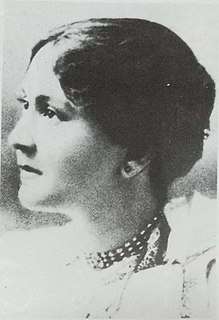Pragyasundari Devi
Pragyasundari Devi (born before 1884 – died 1950), also seen as Pragyasundari Debi, Pragya Sundari Devi, Pragasundari Debi, or Prajnasundari Bezbaroa, was an Indian cookbook author and magazine editor. Her Amish O Niramish Ahar was a "significant" early cookbook in the Bengali language.[1]

Early life
Pragyasundari Devi was the daughter of scientist Hemendranath Tagore and the sister of Purnima Devi. Her grandfather was philosopher Debendranath Tagore and her great-grandfather was industrialist Dwarkanath Tagore. Nobel laureate and poet Rabindranath Tagore was her uncle. Other kin in the extended Tagore family included her aunt, novelist Swarnakumari Devi, her uncle, philosopher Dwijendranath Tagore, another uncle, civil servant Satyendranath Tagore, and another uncle, artist Jyotirindranath Tagore. Indian feminist Sarala Devi Chaudhurani was her first cousin.[2]
Career
Her first cookbook, sometimes called "the first cookbook in Bengali",[3] Amish O Niramish Ahar, was published in 1902.[4] She warned readers in this first volume the home cook that “Spending a lot of money is no guarantee for good food," as she encouraged the efficient use of inexpensive vegetables.[5] She published a second vegetarian cookbook, and later two more cookbooks that included some meat dishes. Her later cookbooks focused on the cookery of Assam and on pickles and preserves.[2]
Beginning in 1897, Pragyasundari Devi edited a women's magazine, Punya, which included recipes.[6]
Personal life
Pragyasundari Devi married Lakshminath Bezbaroa, an Assamese-language writer and literary agent. They had four daughters, one whom died very young, five granddaughters and one grandson, and eleven great-grandchildren.[7] He encouraged her to publish her recipes in book form. Pragyasundari Devi died in 1950. Ira Ghosh, her granddaughter, wrote a biographical introduction to a recent edition of Amish O Niramish Ahar, and updated it with more current measurements and directions.[2][8] Another granddaughter, Ritha Devi, was a well-known Odissi dancer.[9][10]
References
- Utsa Ray, Culinary Culture in Colonial India (Cambridge University Press 2015): 63. ISBN 9781107042810
- Devapriya Roy, "Cooking with Pragyasundari: A woman of the Tagore household tells you how to make bhapa ilish" The Indian Express (October 8, 2017).
- Ronojoy Sen, "Tagores We Didn't Know About" Times of India (May 8, 2010).
- Pragyasundari Devi, Amish O Niramish Ahar (1902), via Archive.org

- Sudeshna Banerjee, "Kitchen Queens" The Telegraph (May 11, 2012).
- Utsa Ray, "Aestheticizing Labour: An affective discourse of cooking in colonial Bengal" South Asian History and Culture 1(1)(January 2010): 60-70.
- Chitra Deb, Women of the Tagore Household (Penguin UK 2010). ISBN 9789352141876
- Uttara Debi, "Women, Community, and the Material Culture of Food" in Nandana Dutta, ed., Communities of Women in Assam: Being, Doing and Thinking Together (Routledge 2015): 244. ISBN 9781317328704
- Rupalim Patgiri, "Ritha Devi: Carrying forward the Legacy" Enajori.
- Amisha Padnani, "Ritha Devi, Who Revived Indian Classical Dance, 92" New York Times (September 24, 2017): 24N. via ProQuest